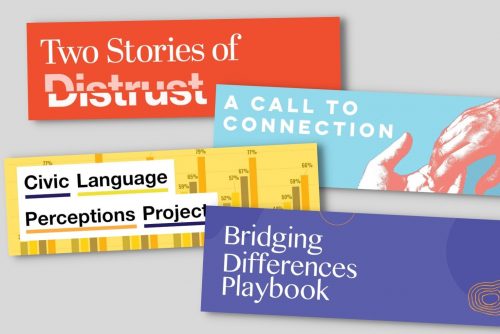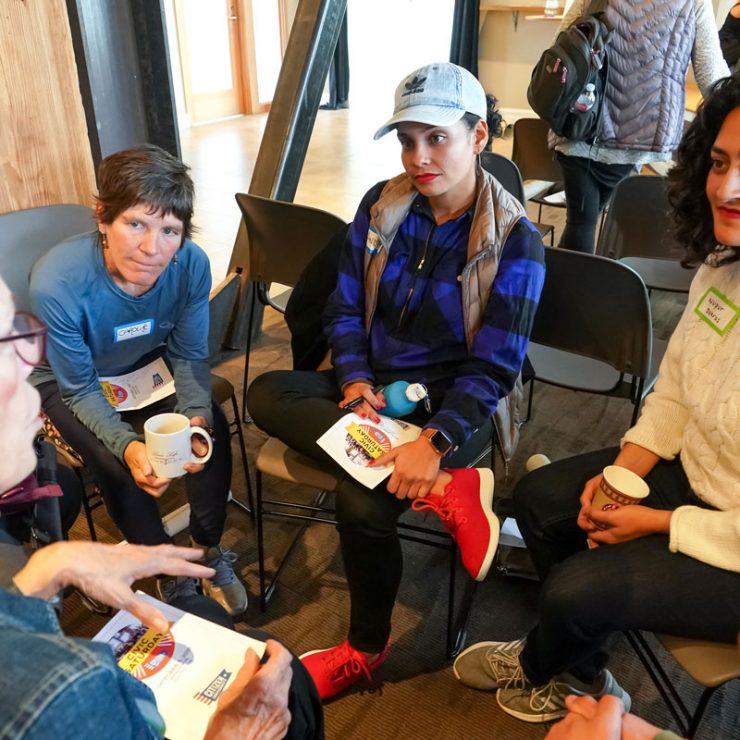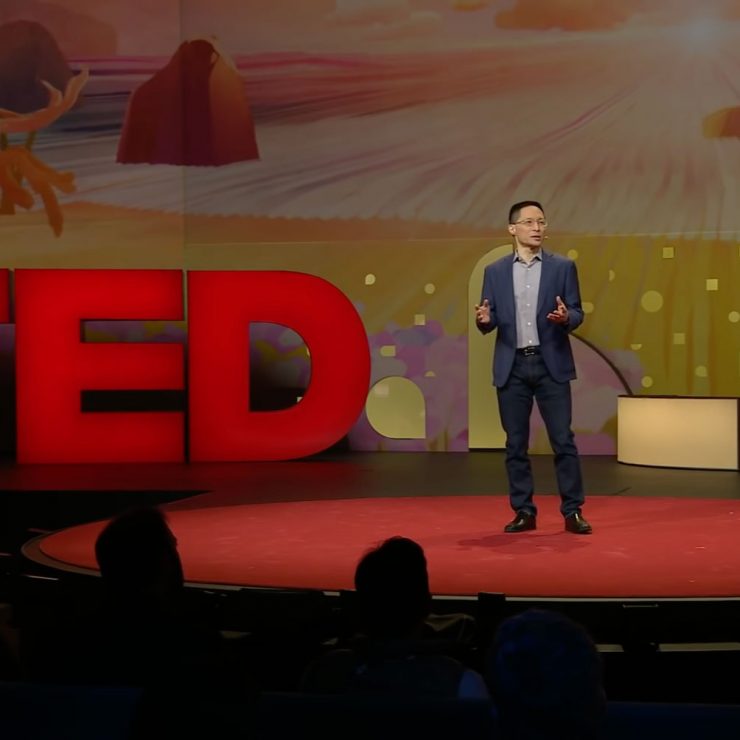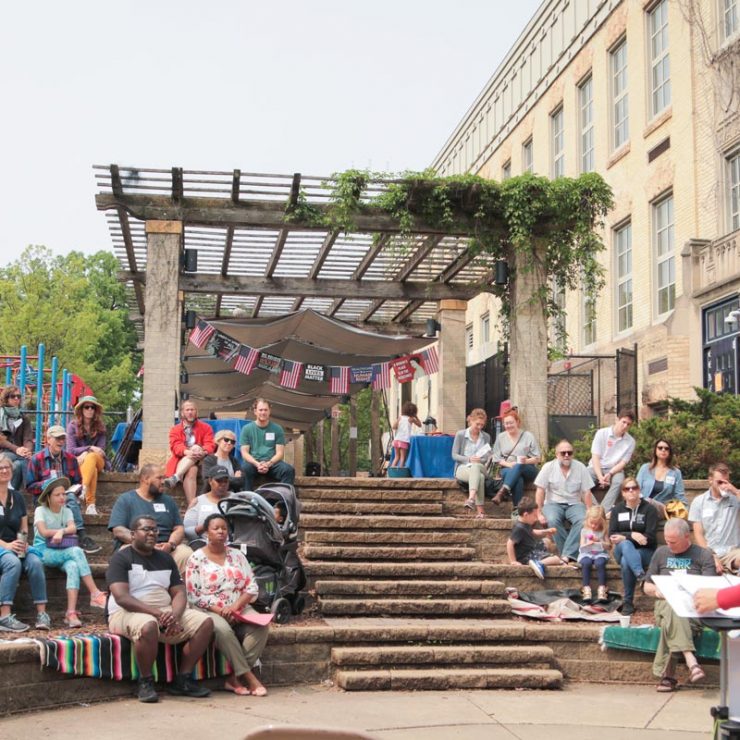Every day, we help people step into their power as citizens and think about their role in our democracy. And even in the midst of this purposeful work, we know that words like citizen and democracy can mean many different things to people in America.
Knowing how the words we use land within our communities is critical in our collective work of reaching and motivating others. This is why our team is always on the lookout for new research, social science, and narratives to help us understand how others feel about democracy, civic culture, and the bonds among Americans.
This article contains a few reports, playbooks, and other projects from some top research teams in the civic field. They’re rich, robust, and accessible ways to infuse ideas into how you approach your work, home life, and relationships.
Here’s how you may want to explore the ideas below…
- A Call To Connection
- If you’re looking for ways to be more intentional about building relationships and deepening connections.
- Civic Language Perceptions Project
- If you want to understand what civic language means to people in your communities.
- Two Stories of Distrust
- If you want to understand how trust works and what actions strengthen or undermine trust.
- Bridging Differences Playbook
- If you want to strengthen your role as a bridge builder across your community.
From the Einhorn Collaborative
We are wired to be in relationship with others. But tending to our connections takes practice.
The antidote to isolation and hyper-individualism is undoubtedly deeper connection with others — but how do we make that a reality? It’s a tall order to rekindle relationships across sharp, painful divisions. That’s why “A Call to Connection” outlines practices of connection, such as…
- Practice #3 — Finding Shared Purpose
One sociological study showed that sharing goals strengthens ties — even between members of different groups. Recognizing a shared goal can encourage people from different groups to see one another as allies, not adversaries — especially if they need to work together to achieve their shared goal. - Practice #5 — Celebrating as Much as Possible
Psychologist Sara Algoe explains why celebrating together is so impactful: “Having fun, giving encouragement…and celebrating together draws us in and keeps us coming back for more.” Critically, it is precisely in sharing the good times, and having others celebrate with us, that we learn we can rely on them in the tough times, too.
Most likely, these practices (and the five others in the report) won’t be radically new to you. But it is precisely the fact that they are radically old that makes them powerful and accessible to all of us. When we weave them into our daily walk and talk, practices become norms — and norms become culture.
About this project: “A Call to Connection” from the Einhorn Collaborative is a primer for leaders who want to take practical steps toward fostering a culture of connection across your areas of influence. Of course, policy change is essential, but it is also insufficient. To complement structural change, this report offers a lens, indeed an orientation to life, that prioritizes and strengthens relationships.
This robust guide combines scientific research, stories of impact, and recommended practices into one document. It’s designed to help all of us better integrate connection into our life and work!
From Philanthropy for Active Civic Engagement
When Americans use words like patriotism and democracy, are we talking past each other? Or worse, are we furthering division?
From town to town and identity to identity, words hold different weight and meaning. While we rib each other for saying soda instead of pop (or pronouncing it caramel or caramel), we make profound snap judgments when someone says social justice or liberty. The new Civic Language Perceptions Project from PACE set out to explore the disconnects between the language of the professional civic field and everyday Americans. Here’s some of what they found…
- The majority of commonly used phrases in democracy and civic engagement work are generally viewed as more liberal than conservative.
- Terms that were seen as most positive across demographics include Unity, Liberty, Citizen, Justice, Democracy, and Patriotism.
- One point of possible disconnect is how generations view language. Those over age 65 viewed Patriotism more positively than those under 34. The inverse was true for Activism, with those under 34 having greater positivity toward it than those over 65.
“Data is just one way to listen,” shared the research team. They encouraged us — and we encourage you — to resist the urge to see this data as a definitive finding. Knowing the linguistic texture of our community is one tool to more deeply connect with those around us. It helps us notice and check our assumptions. And it shows us how we might even be able to influence perceptions of language ourselves (just as we aim to do with the word citizen here at CU). What will you do with this new knowledge?
About this project: The Civic Language Perceptions Project seeks to understand peoples’ perceptions of the language associated with civic engagement and democracy work. PACE (Philanthropy for Civic Engagement) conducted a nationally representative survey of 5,000 Americans as step one into a larger process of inquiry and discovery.
Their exploration of this data – and what it means for our collective work – is only just beginning. They’re inviting others to see the data as ours to explore, to probe, to ask questions, to make meaning, and ultimately, to improve our shared efforts of increasing civic engagement and strengthening democracy.
From More in Common
Trust can be broken in an instant, but takes a long time to build. So why is something so fragile so very, very important?
“In high trust societies, people are able to organize more quickly, initiate action, and sacrifice for the common good,” says a recent report on trust from More in Common. “High trust societies have lower economic inequality and growing economies, lower rates of corruption, and a more civically engaged population. Distrust, on the other hand, leads to political extremism and an unwillingness to engage in society.” The research in this report unearthed many sobering findings including…
- While a majority of Americans (56%) are excited about the new opportunities they might have in a rapidly changing America, there is a substantial proportion (44%) who are more concerned they will be left behind.
- Only 37% of republicans feel coming together is possible, whereas 68% of democrats do.
- When in their neighborhood, 70% of white Americans feel treated with dignity. But only 46% of Asian Americans feel the same.
When we develop trust and dignity for one another, we’re more likely to show up for each other. And when we see everyone leaning in, raising their hands, and taking responsibility for the common good, trust grows. But, as we’re sure you know, the inverse is true. Hurt and injustice leads us to withdraw and disengage — weakening the integrity of our participatory system.
It is no surprise that there is no single solution to rebuilding trust. Instead, it may be more helpful to think of solutions as possible “pressure points” in the system: areas where a given investment of energy would yield the greatest change. The report outlines concepts such as belonging, integrity, and participation as key points.
About this project: In this report, More in Common seeks to shed new light on Americans’ experiences of trust and distrust. They look at trust through the lens of individuals’ ideologies and personal experiences of belonging, dignity, and equality. Their intent is to describe how perspectives on truth and fact are shaped by factors that go much deeper than our fractured media landscape and the explosion of online disinformation.
Understanding the different ways in which distrust manifests will help policymakers, institutional leaders, and everyday Americans determine what actions they can take to build back trust and ultimately contribute to a healthier and more productive democracy.
From the Greater Good Science Center
“Like players on a basketball court, sometimes you have to dribble, and other times you have to shoot.”
This line from a recent playbook for bridging differences reminds us that there are many ways to make forward progress. To extend their logic, it takes a variety of players to make a successful team — from point guards to centers. This playbook outlines members of a different kind of team: bridge builders. Bridge building is vital to healthy relationships and healthy institutions. And it helps counteract the trends toward greater polarization that we have been seeing for years in the United States.
Bridge Builders don’t come in a single form or model. Some work as mediators or lead groups devoted to cross-group understanding. Others are K-12 educators, local politicians, workplace managers, or leaders of faith-based groups or other community-based organizations. They span ages, neighborhoods, and backgrounds. Here are a few roles that Bridge Builders might play…
- The Explorer bridges by exposing themselves to new situations that allow them to interact with different people and perspectives. They’re curious and adventurous. They don’t shy away from putting themselves in the potentially uncomfortable position of meeting diverse people.
- The Connector hopes to “connect the dots” among people with differences. They have an intuitive ability to sense how people with different strengths and weaknesses can come together and establish common ground.
- The Seeker is constantly learning about new perspectives and stories. They defy judgment by asking questions like: What’s your story? They get to the root of who someone is by inquiring about their upbringing and values.
- The Mediator knows how to stay calm and composed in moments of conflict. They can listen from “above the fray” rather than rushing to a response or judgment.
Which role do you play? The report is chock full of strategies and encouraging examples to help you strengthen your building.
About this project: The Bridging Differences Playbook is born from deep social science. UC Berkeley’s Greater Good Science Center reviewed decades of scientific studies, interviewed dozens of leaders, and surveyed the landscape of relevant programs. From this work they collected enduring wisdom and best practices for bridging political, racial, religious, or other divides.
They identified a set of skills and strategies that support positive dialogue, relationships, and understanding between groups or individuals. For each of the 14 skills, you can read about the main steps involved in how to practice it. Then they explain why and when this skill is useful and offer caveats to keep in mind when you try it out.







